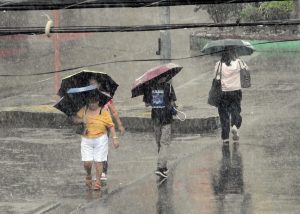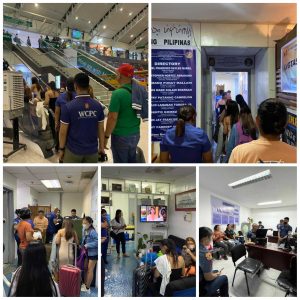LAST Monday, the Secretary of the National Economic Development Authority (NEDA) Arsenio Balisacan, together with officials of the Department of Public Works and Highways (DPWH), the Provincial officials of Davao del Norte and the local government of the Island Garden City of Samal led by no less than Gov. Edwin Jubahib and Mayor Al David Uy, respectively, conducted an inspection tour on the route location of the planned Samal Island-Davao City connector bridge.
After the inspection tour, a gathering of people, including barangay officials and, we assume, some, if not all, of the stakeholders on the mega infrastructure project. We were not fortunate enough to join the inspection and the succeeding meeting. It was, however, very clear on the footage of television coverage that all those present, not just the top officials of government offices represented in the gathering, were one in their support for the implementation of the bridge project wherever it is aligned. Of the barangay captains asked about their views, only 3 or 4 did not show their hands. They were, however, not asked to give their reason.
On the other hand, both Governor Jubahib and Mayor Uy made their strongest push ever for the immediate realization of the bridge. The two local government executives believe that once the bridge is constructed and open to the public the economic boom of the island city will perk up at its fastest speed ever.
We took it from Director General Balisacan of NEDA that as of yesterday, there is no more stopping the implementation of the project, even as he was quick to assure all the adversely affected stakeholders that the government is ready with its budget for the expropriation of properties that will be used in the construction of both approaches – the one in the Davao mainland and those in Samal.
Executives from the DPWH did their best efforts to explain why the proposed route recommended in the feasibility study by a Hong Kong-based consultant is the one adopted by the government. The explanation cited scientific basis in making the final choice, specifically on the provision of a safe height of the bridge’s center span to allow passage of the largest sea vessel that will call on the Davao Port in Sasa. The explanation also cited efforts in making the bridge location far from interfering with the takeoff and landing of airplanes in the airport located not far from the proposed bridge site.
On the other hand, an official from the DENR debunked arguments of those recommending the transfer of the bridge route that insisting on the proposed alignment would destroy a well-preserved coral reef, thus adversely affecting the underwater sea creatures’ habitat.
According to the said DENR official, a team of “expert” environmentalists from the government and the private sector conducted several dives in the area mentioned to check on the status of the reef. And he proceeded to cite the team’s supposed finding that the reef is not as robust as bandied around; that the corals are showing poor conservation processes. So, the DENR guy said, there is nothing to be destroyed during the conduct of activities related to the bridge construction.
What puzzled us is the report by some environmental experts from the academe, one of whom even claimed that the so-called DENR experts who conducted the dive study were her students. Another environmental expert from Ateneo de Davao also conducted his dive study on the reef area and submitted his report with his findings and recommendations. The results of the study by the academe-based experts all run counter to that of the one conducted by the DENR.
Is this the reason why the proponents of the adopted bridge alignment are loudly banding around their proposed mitigation plan on how not to totally erase the reef into oblivion?
Now, after last Monday’s ocular inspection, it seems those who are recommending a change in the location of the Samal approach may no longer have any other recourse but to file a petition for a Writ of Kalikasan with the Supreme Court.
But will the future petitioners be able to convince the High Court that there is indeed a need for the writ issuance, given the government’s position on the bridge project? We are certain that it is one hell of an effort, considering that the mean objective of the bridge is to hasten the island city’s socio-economic development – a responsibility primarily lodged in the government.
It is our take that the High Court would probably back those who are looking at the bridge construction as providing benefits to a bigger number of people instead of making them the sufferers.
The government, through the DPWH, however, must see to it that those badly affected stakeholders must be compensated fair and square and that those getting their livelihood from the affected business establishments must be given the necessary incentives so they can tie over the moment they lose their income when the businesses they are selling their goods and other souvenir merchandise get closed when the bridge construction begins.




